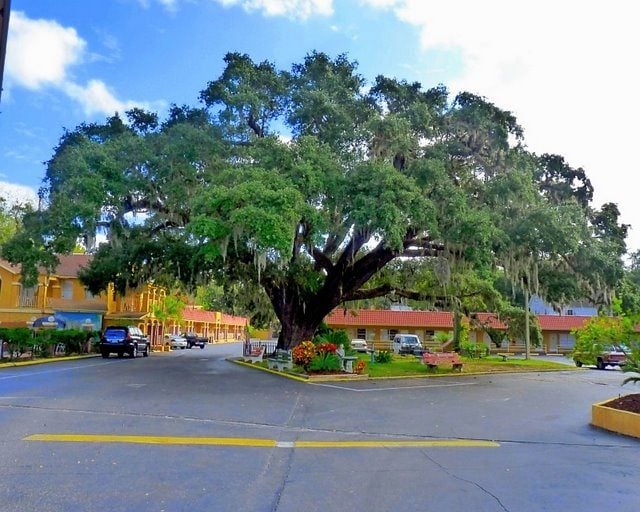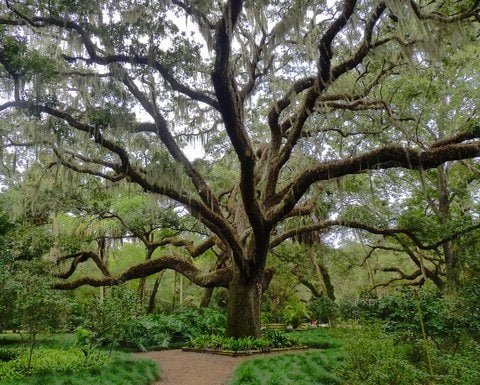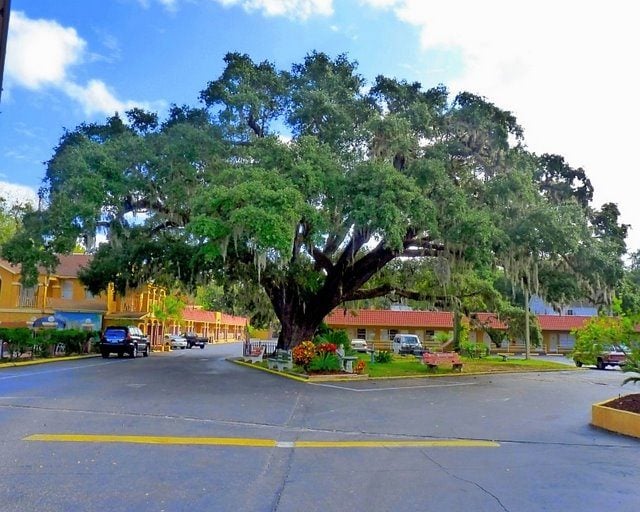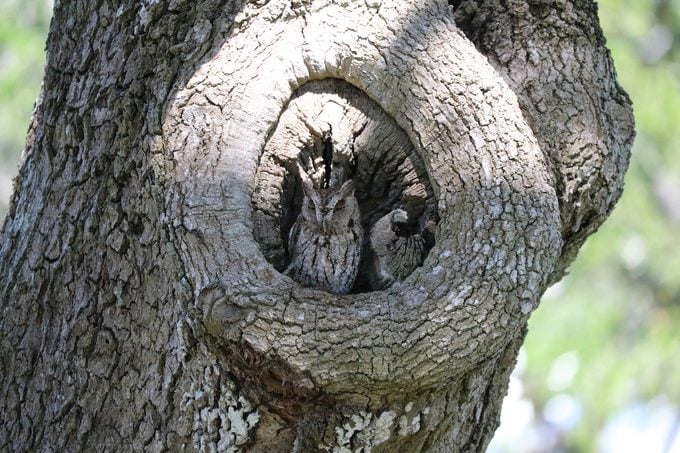Focus on Natives: Live Oaks and Spanish Moss
Updated: Jan. 25, 2023

It's a common myth that Spanish moss damages live oak trees. Find out the truth and learn about the benefits of Spanish moss for wildlife.
Does Spanish Moss Harm Live Oak Trees?
Perhaps no image is more representative of the southern outdoors than a giant live oak dripping with Spanish moss. But there’s a real misconception out there that Spanish moss is bad for the trees. I thought this post would be a good time to clear up that myth.

Southern live oaks (Quercus virginiana) are native throughout much of the southeast, and get their common name from the fact that they remain green (live) throughout the winter. To fulfill their deciduous nature, each spring the trees lose their leaves and immediately grow them back. Like all oaks, it produces acorns—great for squirrels and other nut-eaters.
Live oaks are survivors. Many specimens are more than 500 years old, and one is even believed to be 1,400 years old! They withstand floods, hurricanes, and salt spray. They even tend to survive fires, because fire rarely reaches the crown, allowing the tree to re-sprout vigorously from the roots.
This longevity makes live oaks the perfect spot for large growths of epiphytes such as Spanish moss (Tillandsia usneoides). An epiphyte is a plant that absorbs nutrients from the water and the air. It does not take any sustenance from the tree in which it hangs, nor does it dig roots into the tree or “suffocate” the tree.

Basically, Spanish moss just needs somewhere to hang out. Live oak foliage leaches an especially high amount of the nutrients it needs. While excessive growths of Spanish moss can be problematic for unhealthy trees in high wind situations, in most cases healthy live oaks have extensive root structures that keep them in place during storms.
Learn how to repair and care for storm damaged trees.
Spanish Moss Benefits

Spanish moss is great for wildlife. Birds use it for nesting material, and it provides shelter for creatures like bats and bugs, including a type of spider that’s been found nowhere else. Throughout history, humans have used it to stuff mattresses, as packing material and insulation, and even in the car seats of some of the first Fords. (This proved to be a problem when the red ants living in the Spanish moss made their presence known. They solved this problem in the future by boiling the moss first.)
So really, y’all, there’s no reason for southern nature and wildlife lovers not to like Spanish moss just as much as the stately tree that it hangs in.
